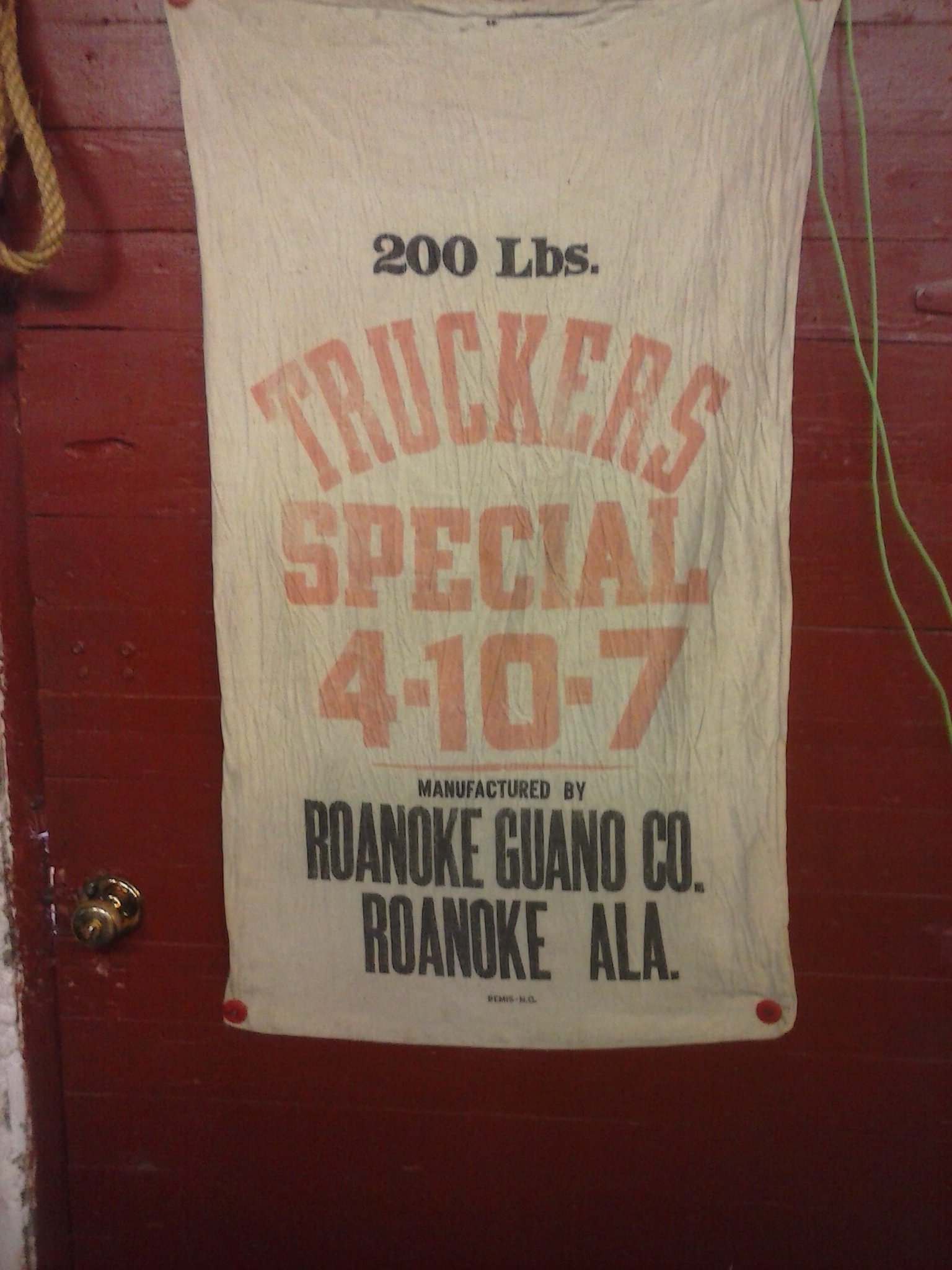The History of Randolph County Training School
The Randolph County Training School was a foundation for the African American community and its children for 51 years. Located on US Highway 431 just outside the city limits of Roanoke, Alabama, it was one of the area’s most important educational institutions. Prime centrally located land for the school was purchased from the Roanoke Guano Company between 1917 and 1918. A bag used by the company to sell its Guano (mined bird or bat droppings) is shown below.
Photo: courtesy of Jerry Parmer.

The school was chartered as a state institution on September 15, 1919 and opened in a two-story wood framed building at the start of the 1920-21 school year. The school opened as a segregated school for African American children approximately one hundred years after Alabama was admitted to the Union on December 12, 1819. After producing generations of productive graduates, it was closed in the spring of 1970 pursuant to a federal district court order, which mandated that the county and city system of dual public education, notwithstanding “freedom of choice” and other tactics, was a violation of the Equal Protection Clause of the Fourteenth Amendment.
During the 51 years of RCTS’ existence, several cohorts of teachers and staff served the school and left to assume important positions at other secondary schools and colleges and universities. Unfortunately, very few of the school’s official records and memorabilia were preserved. Former teachers and students recall that after the school was closed pursuant to a federal court order, itwas left open to the public without supervision and individuals were allowed to take documents and equipment from the school. Also, they recalled that many of the school’s records were burned at the rear of the building during the summer of1970. Of course, the County andState Boards of Education should have maintained the school’s records, beyond individual student transcripts, for historical purposes and as part of the public record. The refusal to do so was probably a reflection of the low regard they had for African American history and institutions that had served the educational needs of Black children during the period of segregation. Fortunately, the transcripts of many individual students are maintained in Wedowee, Alabama at the County Board of Education. Notwithstanding official neglect of the history of the county’s largest and most significant public high school for African American students, many of its graduates have worked hard to keep the tradition and legacy of the school alive through biennial all-school reunions and individual class reunions. Fortunately, many also preserved pictures, newspaper articles and other materials about the school from which its history could be written.
The glorious history of the RCTS spanned 51 years. It's rich heritage will forever be carried forth by its students and their descendants. Long Live the Mighty Bulldogs!